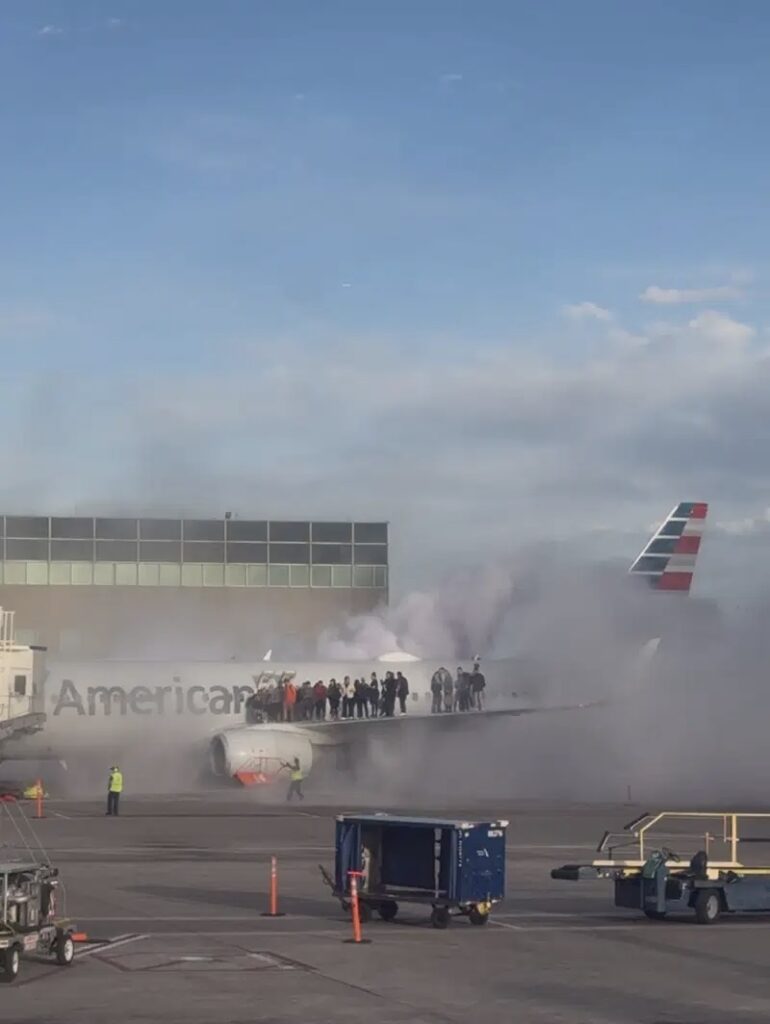
Panic and quick thinking defined a harrowing scene on board American Airlines Flight 1006 on Monday morning after the aircraft caught fire mid-air, forcing an emergency landing at Denver International Airport. The flight, an Airbus A321 en route from Dallas/Fort Worth to Seattle, was carrying 168 passengers and six crew members when one of its engines reportedly burst into flames approximately 30 minutes into the flight.
According to passengers, the incident began with a loud bang followed by intense vibrations on the left side of the aircraft. Moments later, flames and sparks were seen trailing from the left engine. Flight attendants quickly moved through the cabin instructing passengers to remain calm and stay seated while the cockpit crew declared an emergency with air traffic control. Oxygen masks were not deployed, but the crew prepared for a rapid descent to a safe altitude as the fire continued to burn.
Captain Mark Evans, a veteran pilot with over 20 years of flying experience, managed to stabilize the aircraft and divert to Denver, the nearest major airport. Witnesses on the ground later reported seeing the jet approaching with smoke billowing from its engine before it landed safely on Runway 34R at approximately 9:52 a.m. Fire crews were already positioned along the runway, responding within seconds to extinguish the flames as the aircraft came to a stop.
All passengers and crew members were safely evacuated using emergency slides. Three people sustained minor injuries during the evacuation, primarily due to smoke inhalation and the rush to exit the aircraft. They were treated at a local hospital and later released.
In a statement, American Airlines confirmed the incident and praised the professionalism of its flight and cabin crews. “Flight 1006 from Dallas/Fort Worth to Seattle diverted to Denver due to a reported mechanical issue involving one of the engines,” the airline said. “The flight landed safely, and all customers and crew have deplaned. We are grateful for the swift actions of our pilots and first responders.”
The Federal Aviation Administration (FAA) and National Transportation Safety Board (NTSB) have both launched investigations into the cause of the fire. Preliminary reports suggest a possible engine compressor failure, but officials have emphasized that it is too early to determine whether mechanical fatigue, a bird strike, or a fuel system issue was to blame. The affected Airbus A321 was reportedly equipped with CFM International engines, a common model used across American Airlines’ narrow-body fleet.
Passengers described the moments leading up to the landing as tense but orderly. “You could feel the plane shaking, and then people started praying,” said one traveler from Seattle. “The flight attendants stayed calm the whole time and kept us informed. Once we landed, everyone cheered.”
Denver International temporarily suspended departures from the affected runway as fire crews conducted inspections and cleanup. The aircraft remains grounded pending a full mechanical assessment.
This incident marks the second emergency landing involving a U.S. airline in October, raising renewed attention to engine maintenance and inspection protocols across the industry.


